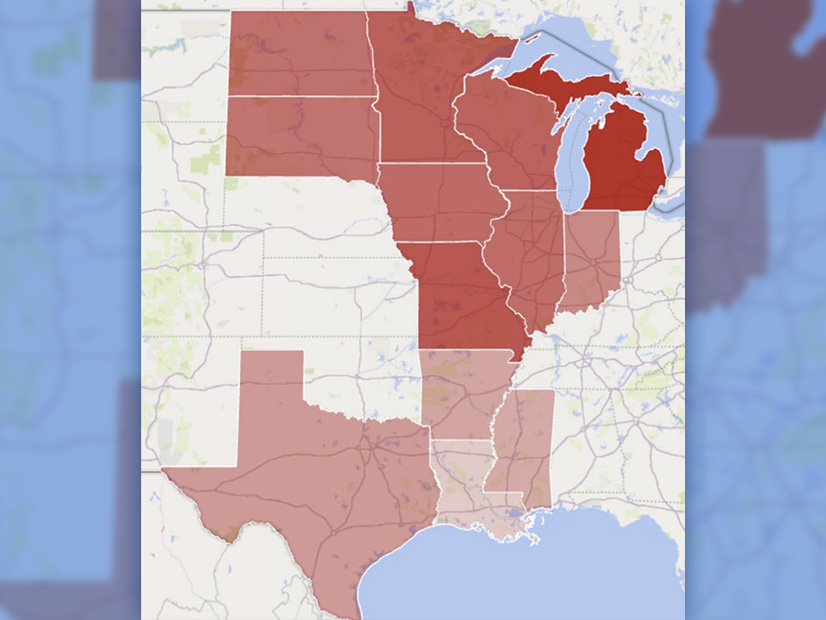In less than two decades, increasing electrification could have MISO members building hundreds of gigawatts of new generation and faced with winter systemwide peak demand that eclipses the summer peak.
According to the RTO’s electrification report published earlier this month, by 2040 it could see a more than 200 GW peak during a January day. The report expects July afternoon peaks of 193 GW.
MISO said electrification load growth, paired with the region’s decarbonization goals, will require substantial investments in generation and transmission. It said electrification is set to escalate demand and revolutionize the grid “after many years of negligible load growth.”
The report conservatively projects the need for about 163 GW of new resources, more than double the current fleet. MISO said last year it had 152 GW of available capacity to meet a 125-GW peak. (See MISO Preps for Balmy Summer with Pandemic Effects.)
More aggressive electrification adoption and renewable goals could require anywhere from 200 to 300 GW in new capacity, the report said.
MISO says it needs 200 GW of new capacity to be placed in-service within 20 years to meet the more conservative electrification estimate and a 40% renewable generation fleet. It said it added 10.8 GW in 2019 and 9.9 GW last year, both record years for completing generator interconnection agreements.
MISO said the new peak will likely force a change to its resource adequacy construct, resource accreditation, transmission planning and generation-outage coordination procedures.
“Electrification could have profound impacts on how we prepare for a potential shift in electricity usage across the MISO region and the entire country,” Richard Doying, executive vice president of market and grid strategy, said in a press release.
A summer-to-winter peak transformation would be predominantly driven by the electrification of heating loads in commercial and residential buildings, the RTO said. The footprint’s northernmost — and coldest — regions have the most electrification potential, it said. Consulting firm Applied Energy Group (AEG), which prepared electrification scenarios for MISO, singled out Michigan as the state with the greatest potential.
States with more existing natural gas heating infrastructure also have more potential for electrification, AEG said.
MISO also said growing electrification will be manifested in two daily power demand peaks in nearly all months, with a morning peak added to the afternoon peak. The change in load shapes is due to “uncontrolled” electric vehicle charging and heating and cooling loads, the grid operator said.
The daily demand’s “camel-hump” peaks will require more ramping services, MISO said, though flexible loads could meet more extreme ramping needs. The grid operator said ramps could vary from 2 GW to 30 GW over a one-hour period.
“While the level and pace of change are outside of MISO’s control, it is critical that MISO anticipate the impact of increased electrification in order to maintain reliability at a reasonable cost as the region evolves,” staff said in the report.
MISO will host an electrification workshop May 5 to discuss the report with stakeholders.




